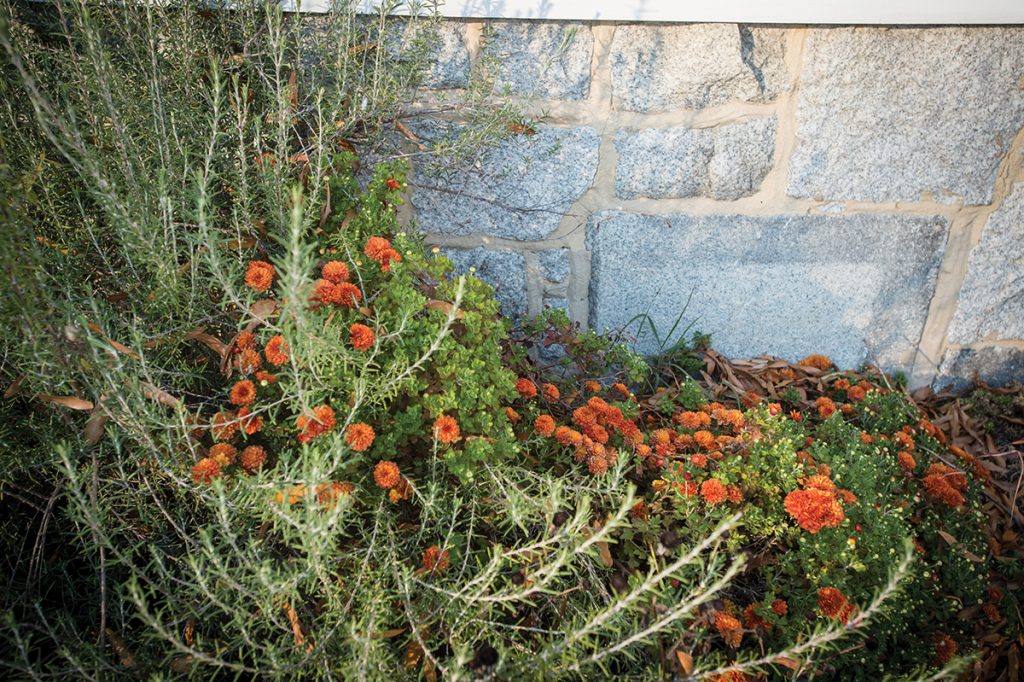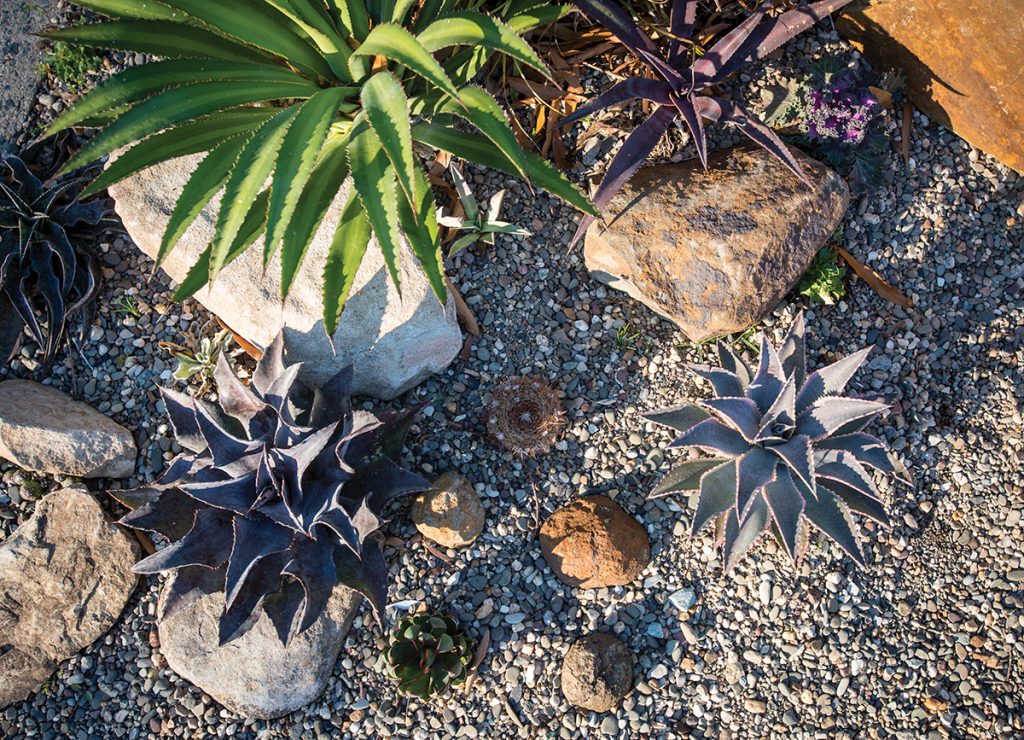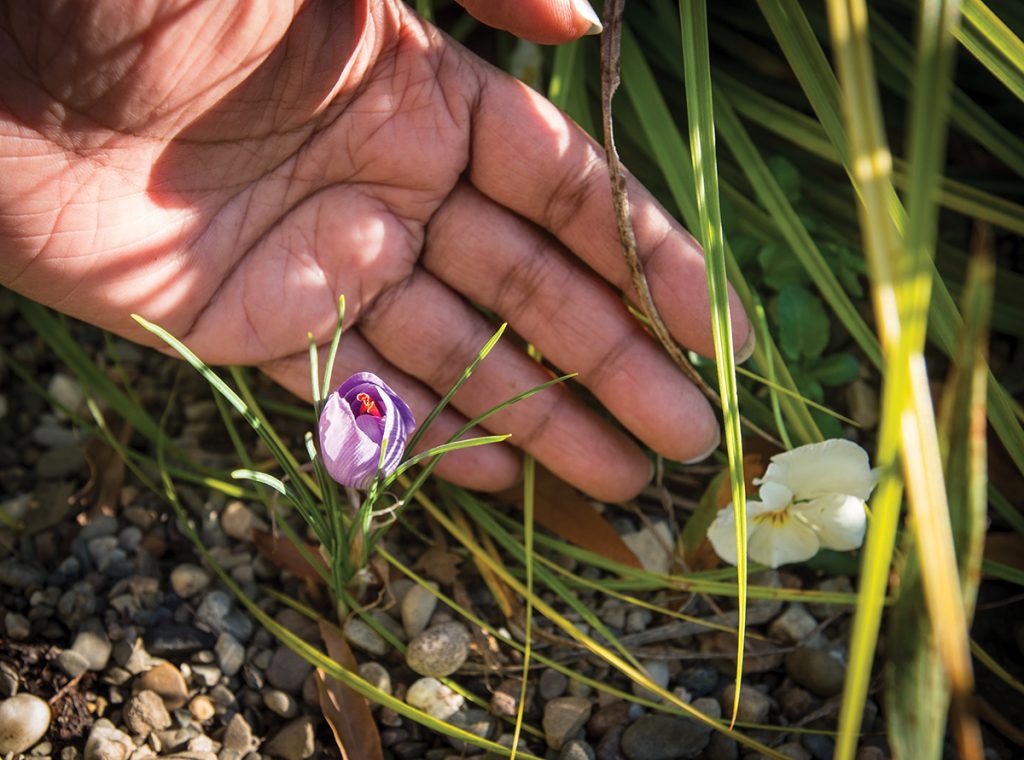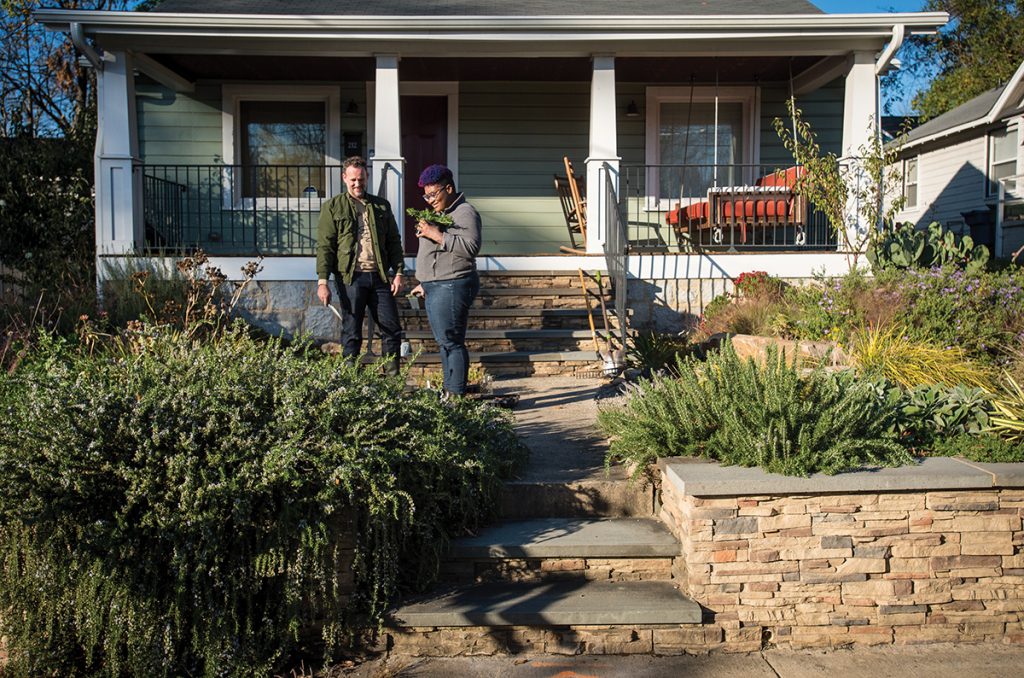This Durham garden expert transformed a small, gravelly front yard into a thriving ecosystem of herbs, perennials and succulents.
by Colony Little | photography by Kate Medley
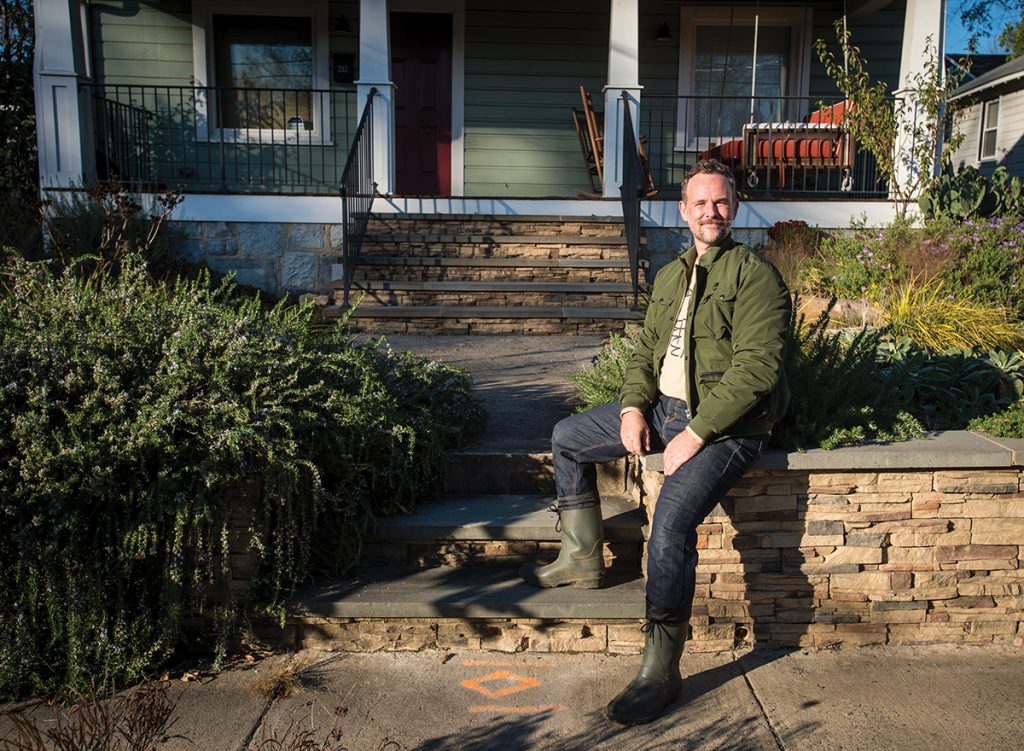
Preston Montague first got into gardening as an art student at the University of North Carolina Greensboro. “I rented a home in an eclectic college area, where the people who actively gardened were punks and Quakers,” he says of his neighbors.
These two groups of people encouraged him to take up gardening as a hobby, which led to his career as a landscape architect.
On the surface, these two communities seemed different from one another. But, he explains, “They had a lot in common, most importantly living a mission-driven life and sharing resources with communities that have very little.
They believed that gardens weren’t just for aesthetics, but a place to grow food to share.”
The neighborhood inspired Montague to put those ideas into practice.
“My own yard in Greensboro was a place for people who didn’t have homes to call their own,” says Montague, citing a shed in his yard that occasionally served as a temporary shelter.
He grew tomatoes and pepper plants in the front yard and welcomed people experiencing food insecurity to eat as they pleased. “Those individuals ate from my garden — that was tremendously powerful.”
During this time, Montague learned that he wanted to pursue work that was both creative and generative. “I really lucked out by discovering a love for gardening early on in life and having lots of people who are also excited about it, teaching me new ways to see,” he says.
“Once you stop looking and start seeing, the world becomes more rich and exciting, and you just can’t help but become a more compassionate person once you really see the world in four dimensions.”
With an eye toward landscape design, fine-tuned through undergraduate study in fine art, Montague relocated to Raleigh in 2006 to pursue a degree in horticulture at NC State, an experience that he describes as “the most powerful education experience I’ve had.”
When he graduated in 2008, he discovered that there were more career opportunities in landscape architecture, so he earned a master’s degree at NC State.
Montague built a portfolio of landscape architecture projects including the Raleigh City Farm, a nonprofit urban farm on Blount Street that both sells and donates produce in the community, and Brie Arthur’s Foodscape, a diversified garden that integrates edible plants into an ornamental landscape.
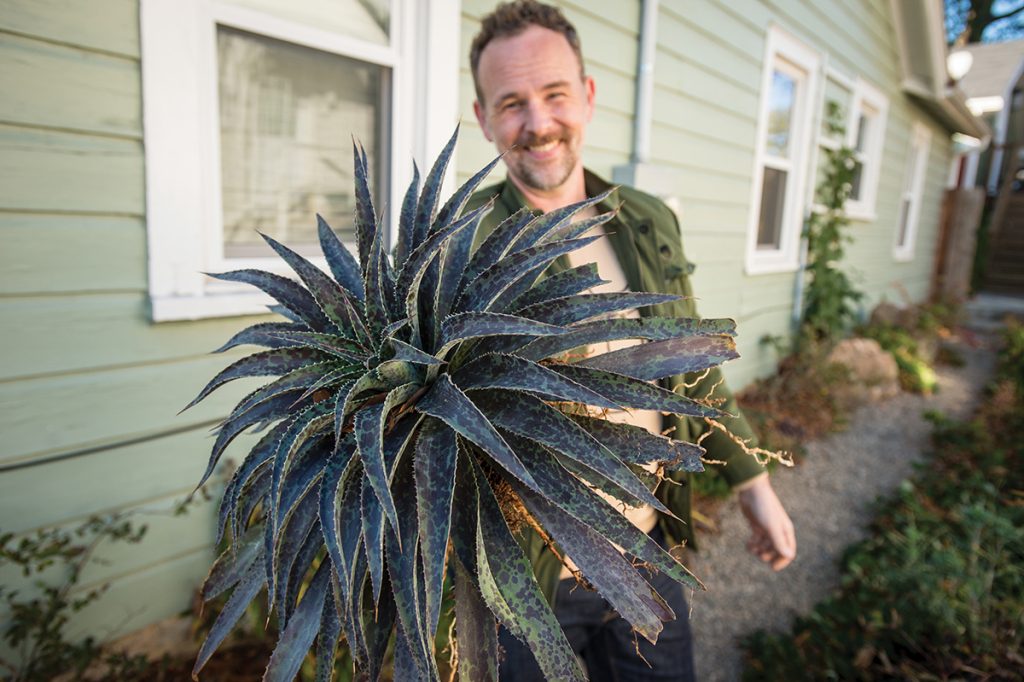
By fusing art and design with horticulture, Montague developed unique expertise. “Ultimately, my horticulture education taught me how to look for clues, using plants to make the invisible visible,” he says.
“Plants can tell you how the soil is composed, they can tell you how stormwater is behaving, and they can tell you if they were an appropriate choice for the environment in which you planted them.”
These lessons did not come easily.
When he launched his solo landscape architecture practice in 2020, one of his first projects — his own front yard in Durham, where he moved that same year — was almost a complete failure.
“Originally, I specified lots of native plants, which I assumed would be successful because they are from this climate,” he recalls, “but I miscalculated the microclimate, which overruled lots of my planting decisions.”
Plants that were native to mountainous regions or wet habitats were not conducive to the hot climate and gritty, gravelly soil on Montague’s property. “It just fizzled out,” he says, “and within a year it was obvious I had to reinvent the landscape.”
This reinvention included keeping the few plants that survived, which, ironically, were non-native Mediterranean herbs. “What the herbs were telling me is that my landscape was dry, hot and windy, so I began looking at environments that fit that description,” he says.
Geographically, the sources of his inspiration were diverse: the tops of Hanging Rock in Greensboro, granite flats in Eastern Wake County, the Fynbos covered mountains of South Africa.
“I began noticing that the plants in those environments have a shape or size that allows them to adapt to the stresses of that environment,” he says.
Montague’s garden now features Eastern Prickly Pear cacti, Echinacea flowers, Mangave succulents and lots of native herbs that better align with the microclimate. He uses mass planting, grouping large numbers of similarly shaped plants, to create density and give more stability to the soil.
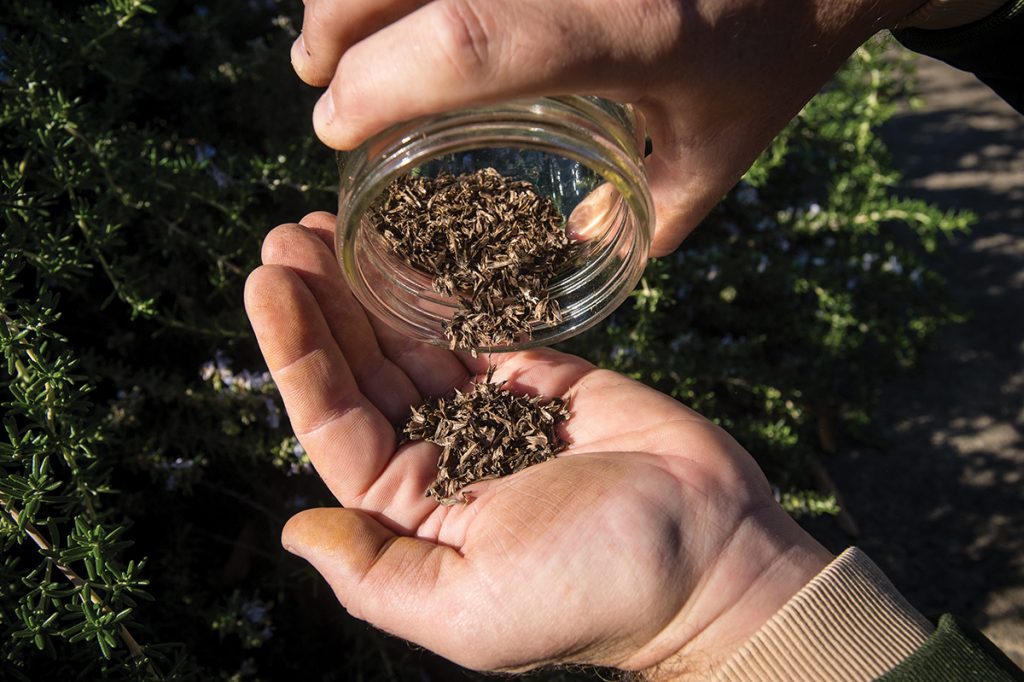
“One of the things I tell people is that often the answer to your problems is more plants,” he says. “By planting very densely, I crowd out weeds and negate the need for mulch. Plants are mulch.”
Some of the groundcover plants in his yard include fuzzy Lamb’s Ear, pale yellow Moonbeam Whorled Tickseed, Earliglow Strawberry and Oregano; Montague maintains a detailed master plant list that organizes the 50-plus trees, shrubs, flowers, herbs and succulents, each categorized by form, function and aesthetic.
Embracing the unique properties of his own garden taught Montague valuable lessons that he imparts to his clients.
“It’s taken an enormous amount of time, critical thinking and experimentation to adapt what I’ve learned about native, ecological landscape design and maintenance to suit our climate and aesthetic preferences here in the Triangle,” he says.
Patience, priorities and trial and error are essential elements of the process. “Once I figured out which native plants would tolerate the stress of my home landscape, I was a much more successful gardener,” he says.
And in the long run, the retooling paid dividends to him — in valuable time: “Now the garden is so resilient I don’t have that much to do. I barely even have to weed or irrigate! Instead, I weed other people’s gardens.”
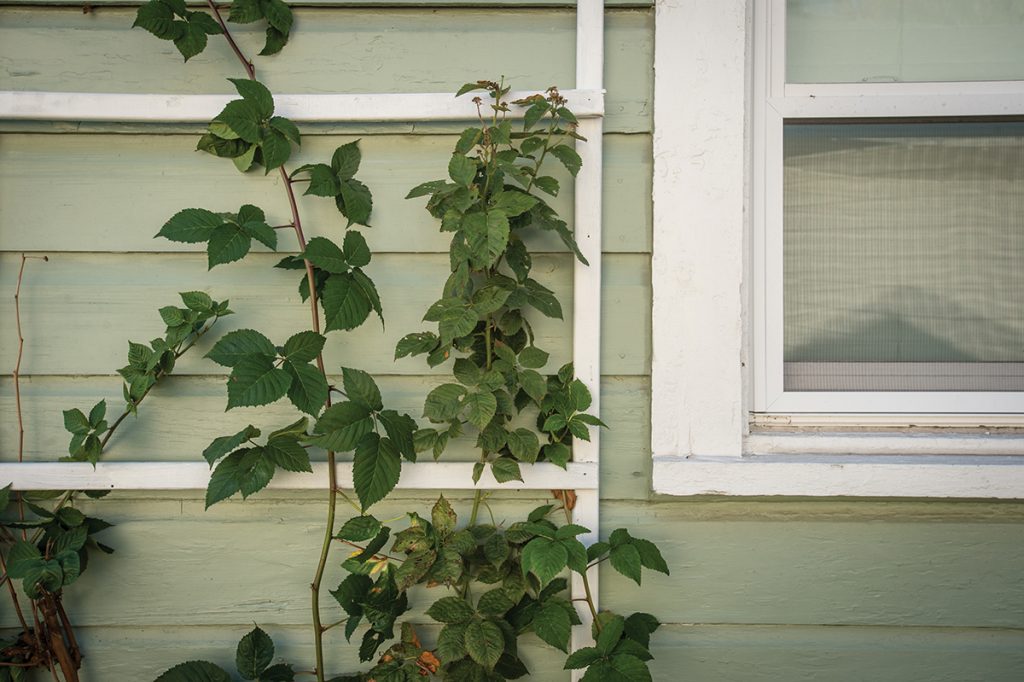
For neighbor Katryna Robinson, Montague’s dedication for gardening is infectious. She first met Montague while they both served on the board of a nonprofit. “Preston’s passion for plants easily draws people to him, and to gardening!” says Robinson.
Inspired by her upbringing in Haiti and her love of flowers, especially orchids, she planted Hibiscus and Canna Lilies in her own garden that remind her of home.
She occasionally visits Montague’s yard, and for her the space evokes feelings of “peace, harmony and tranquility.” For Montague, gardening is now a communal experience, both in its labor and the fruits of the labor; his garden in Durham reflects those early revelations back in Greensboro.
“My front yard design isn’t for me, it’s designed for everyone else. I have boulders for people to sit on and plums, blueberries and strawberries for everyone to nibble on,” he says. “I’ve grown a neighborhood’s worth of Mediterranean herbs so that people can make awesome spaghetti sauce.”
The bees, butterflies and sparkling fireflies that all enjoy his garden are the icing on the cake. “That’s my favorite part of the landscape,” he says. “It went from desert to dessert in just a few years.”
Preston Montague fine tunes his Geer Street yard with neighbor Katryna Robinson. “Katryna is my gardening buddy,” says Montague. “I don’t like to garden by myself. I like it to be a group activity. It’s exercise. It’s fellowship.” Though the garden is mostly self-sustaining, the off-months of winter are more active for Montague, he says: “I am collecting seeds, especially of plants that I love but can’t always find. I do a lot of planting in the cool season.”
This article originally appeared in the October 2023 issue of WALTER magazine.

